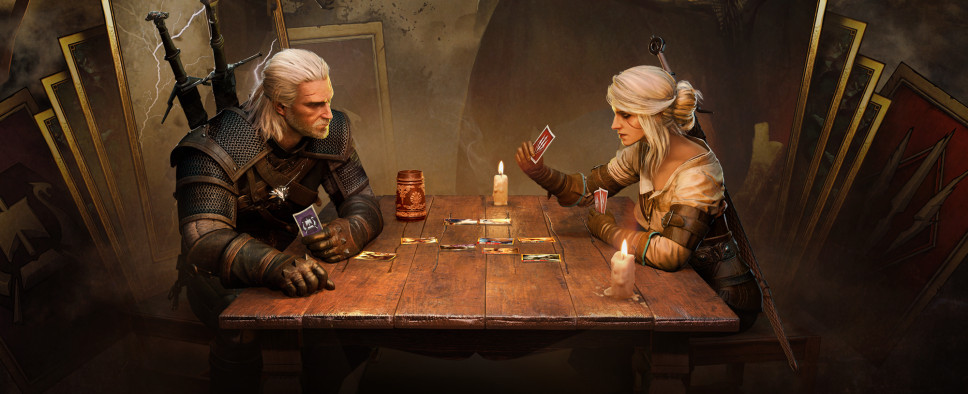Gwent: The Witcher Card Game Previews
-
Category: News ArchiveHits: 2282

A few more previews of CD Projekt RED's Gwent: The Witcher Card Game have surfaced on the web (including one that's laden with developer commentary), providing us with further details on what the CCG/RPG crossbreed will have to offer.
Rock, Paper, Shotgun:
After half an hour playing the game today, along with a presentation showing the still-in-development solo mode, I’m completely won over. Gwent has a fantastic new interface that manages to display all of the necessary information cleanly and legibly, gorgeous card art, well-balanced decks, and fully voiced and animated singleplayer campaigns. The first of the campaigns isn’t ready for public consumption yet but a peek at the tutorial showed an isometric open world in which the player character gathers companions, collects objects and treks around completing quests. All of the elements, those characters and objects, become cards in your deck, and when battle commences, the game of Gwent becomes a depiction of that battle.
And so a card game that actually exists in the world of The Witcher is used as an abstract representation of combat in that same world. If I’d have been put on the spot and asked to predict how a solo campaign might work, I’d have guessed that it’d be the story of a master Gwent player, travelling from town to town. It’s smart of CD Projekt Red not to go with that idea since lots of people have already played that game – it’s called The Witcher 3 and Geralt is the master Gwent player in question.
Monnier gave me an example of what being CD Projekt Red means when developing a free-to-play game. When you buy a pack of cards, either with real money or in-game currency, you’re guaranteed to see three cards that are rare or above (rare, epic, or legendary). You pick one, and get four more random cards. "We say okay, if you want to spend money, that’s fine, but we want to do more than just here’s five random cards. We want to say here’s four random and here’s one you can pick.”
“At the same time, we don’t want these guys necessarily get an advantage over people that don’t want to spend money, and also we don’t want people to grind to be able to get card packs,” Monnier said. “And that’s something I’m not going to tell you about yet because we want to see people’s reaction, but we’ve worked on this system that we think has cracked it, where you can still totally be competitive without having to spend money, and the goal for us is that if you feel that you want to spend some money, go ahead, but at no point will the game tell you this is it, you hit a wall, you must spend money.”
And GamePressure:
Gwent in this new, standalone version has been thoroughly modified, and only the core of the game is similar to what we’ve seen in the Wild Hunt. The devs say that beginners should be able to comprehend the rules in fifteen minutes, but having played a couple rounds I’ve got no doubt – getting really good at this game will take some time, even to the Gwent masters of Passiflora. The changes concern the leader cards, which control the armies, as well as regular cards, which often have unexpected new bonuses. Triss Merigold card, for example, didn’t have any effects in The Witcher 3. Now it has two: Scorch, destroying the strongest card of the opponent, and the “Clear Weather” skill, neutralizing all currently active weather effects – of these abilities, one can be chosen by the player.
Avallac’h is still a spy card, but its value was changed from 0 to 12, which means that playing this card will permanently reinforce the opponent’s deck (contrary to his card in Witcher 3). The mechanics of spies were severely changed altogether. Those cards provided a huge advantage to Northern Kingdoms and Nilfgaard decks in the Wild Hunt, giving two additional cards at the expense of reinforcing the opponent’s deck. Now, the players can chose from two cards, among which only one is face-up.

